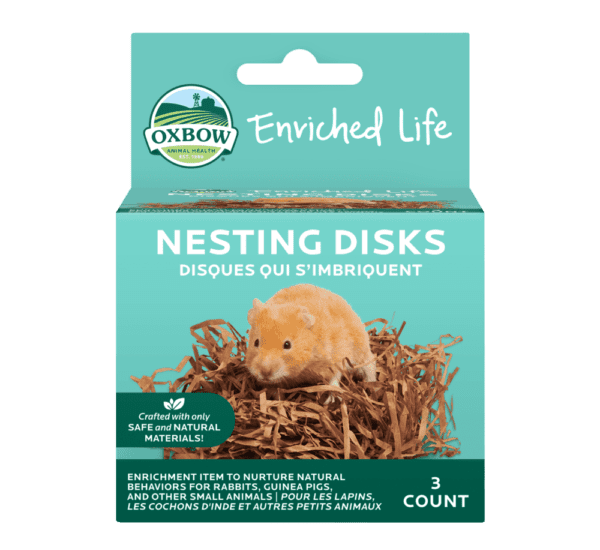Hamster Enrichment with Natural Materials
Hamsters are charming and lively little pets that thrive in an enriched environment. By providing them with adequate stimulation, particularly through the use of natural materials for enrichment, we can greatly enhance their well-being. Not only does this create a more engaging habitat, but it also fulfills their innate behaviors like foraging, chewing, and exploring. This guide will help you understand the importance of enrichment and how to effectively use natural materials to improve your hamster’s quality of life.
Benefits of Natural Materials in Hamster Enrichment
Utilizing **natural materials** for hamster enrichment is not just an aesthetic choice; it also promotes mental and physical health. Natural items often mimic a hamster’s natural habitat, allowing them to express their natural behaviors. This leads to reduced stress and anxiety, which are common in caged animals. Some benefits include improved dental health from chewing, stimulation from new textures, and even opportunities for burrowing. Let’s explore specific natural materials and their enrichment benefits.
Chewing Materials: Wood and Branches
Hamsters have a natural tendency to chew, which helps keep their teeth trimmed. Using **non-toxic wood** or branches can serve multiple purposes; it not only satisfies their instinct to gnaw but also provides a smell and texture that can keep them engaged. Options like apple, willow, and non-treated pine make for excellent chew toys. They can be introduced into the cage as branches or crafted into small chewable toys. Ensuring that these materials are free from chemicals or pesticides is crucial for your hamster’s health.

Foraging and Hiding Materials: Hay and Straw
Providing **hay** or **straw** can enhance your hamster’s foraging skills as they instinctively dig and burrow through these materials. They can create nests and hide away their food, which mimics their behaviors in the wild. Timothy hay is particularly good for this purpose, as it is high in fiber and assists with digestive health. It can be scattered in the cage or used as bedding, allowing your pet to explore and maintain an active lifestyle.
Creating a Foraging Environment
Incorporating a foraging environment is essential for hamster enrichment. Scheming various setups can keep your pet engaged and offer them mental stimulation. A well-planned habitat filled with diverse materials, including substrates that allow burrowing, encourages exploration. Let’s discuss some practical steps to create an enriched foraging environment.
Layering Using Different Substrates
Introduce various **natural substrates** such as shredded paper, aspen shavings, or coconut fiber. Layering these materials offers different textures and allows your hamster to create burrows, which is an excellent form of enrichment. You can provide tunnels made from cardboard or wooden tubes for your hamster to explore. These promote exercise and challenge their instincts while offering cozy hiding spots.

Hide Treats and Food
Another engaging way to enhance your hamster’s environment is by **hiding treats** within the bedding or sand. Utilize small, natural treats such as seeds or vegetable bits. This encourages foraging behaviors, allowing your hamster to explore and discover their snacks. It mimics how they would gather food in the wild, providing both physical activity and cognitive challenges.
Safe Natural Materials for Hamster Play
Choosing the right materials is crucial for ensuring a safe environment for your hamster. There are numerous natural materials that can be safely used for enrichment without risking your pet’s health. Understanding which materials are appropriate will help in optimizing your hamster’s habitat.
Edible Plants and Herbs
Incorporating **edible plants** and herbs can enliven your hamster’s environment. Consider safe options like **dried chamomile**, **sage**, and **mint** to add a sensory experience. Not only do these materials smell delightful, but they can also serve as tasty treats or nesting materials. Always double-check which plants are safe, as some common houseplants can be toxic to hamsters.

Nesting Materials: Paper and Grass
Providing **nesting materials** like shredded paper and grass can encourage your hamster to create cozy burrows. It’s fundamental to avoid colored or scented papers, which might contain harmful chemicals. Natural wicker nest boxes or grass mats can also serve as perfect nesting sites. Move beyond traditional bedding to ensure your pet has a safe environment that encourages natural behaviors.
Key Takeaways from Hamster Enrichment
- Natural materials provide essential stimulation for hamsters.
- Chewing materials like wood and branches promote dental health.
- Foraging setups enhance their natural instincts and overall well-being.
- Safety should be the priority when selecting materials for enrichment.
- Explore various nesting and playing materials to keep your hamster engaged.
FAQ
1. Why is hamster enrichment so important?
Hamster enrichment is vital for their mental and physical health. Engaging their natural instincts through natural materials can prevent boredom and associated stress or anxiety. An enriched environment helps keep hamsters active, encourages natural behaviors like burrowing and foraging, and promotes overall well-being.
2. What types of wood are safe for hamsters?
Safe woods for hamsters include apple, willow, and untreated pine. Always ensure that the wood is free of chemicals, pesticides, and mold. By chewing on safe wood, hamsters can maintain their dental health while enjoying their instinctual behaviors.
3. How often should I change my hamster’s bedding?
It’s advisable to change your hamster’s bedding weekly, or more frequently if it becomes soiled. Use natural bedding materials like aspen shavings or paper-based substrates that can promote comfort and hygiene in their habitat. Keeping a clean living environment is essential for your hamster’s health.
4. Can I use regular green plants as enrichment?
Not all houseplants are safe for hamsters. Before introducing any plant, research to confirm its safety. Edible herbs such as basil, mint, and chamomile can be great additions, providing both enrichment and nutritional benefits.
5. How can I stimulate my hamster without using expensive toys?
Hamsters can be stimulated using simple DIY solutions. Use cardboard tubes for tunnels, create climbing structures from safe wood, or even make a foraging mat by hiding treats in hay or shredded paper. Natural materials can provide plenty of cognitive and physical stimulation without the need for costly store-bought toys.
